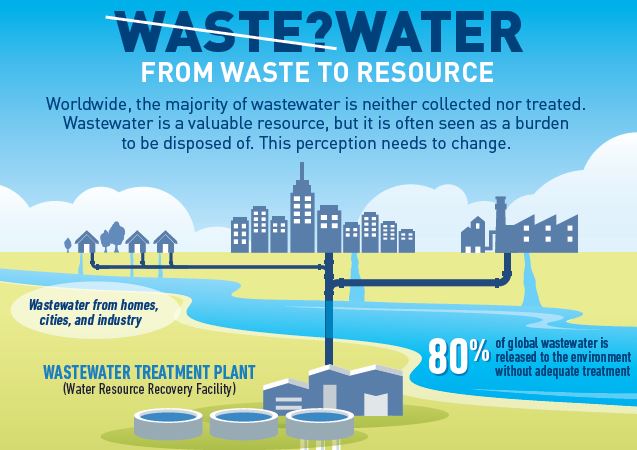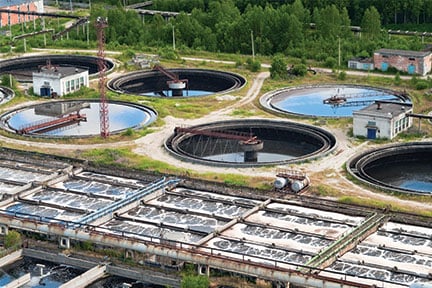Exploring Cutting-Edge Developments in Wastewater Technology
Exploring Cutting-Edge Developments in Wastewater Technology
Blog Article
Comprehending Wastewater Treatment Processes and Their Environmental Impact
The ins and outs of wastewater treatment procedures play an essential role in mitigating environmental difficulties connected with water air pollution. Each stage, from preliminary to innovative treatments, is developed to resolve specific contaminants, eventually guarding both public health and wellness and water ecological communities.
Summary of Wastewater Therapy
Exactly how is wastewater changed into a risk-free source for the atmosphere? Wastewater treatment is a critical process made to get rid of contaminants from utilized water, thereby securing public health and wellness and securing environments. This process begins with the collection of wastewater from property, commercial, and industrial resources, which is after that directed to therapy facilities.
At these centers, numerous physical, chemical, and organic methods are utilized to deal with the wastewater. Consequently, biological therapies, such as turned on sludge procedures, use bacteria to damage down organic matter.
The treated effluent can be securely discharged right into all-natural water bodies or recycled for irrigation and industrial purposes, advertising resource preservation. In addition, the therapy procedure creates biosolids, which can be repurposed as plant foods or dirt modifications, additionally enhancing sustainability.
Phases of Therapy Processes
The wastewater treatment process typically includes 3 main stages: initial, main, and additional therapy. Each phase serves an unique role in minimizing the pollutant tons and making sure the effluent fulfills ecological criteria prior to discharge.

The primary therapy stage focuses on the physical splitting up of put on hold solids from the wastewater. With sedimentation, heavier fragments clear up at the bottom of sedimentation containers, developing sludge, while lighter products, such as oils and greases, float to the surface area and are skimmed off. This procedure significantly reduces the organic and inorganic tons in the wastewater.
Second therapy is an organic procedure aimed at additional reducing the focus of natural issue. This phase is essential for attaining the essential biochemical oxygen need (FIGURE) decrease, inevitably leading to cleaner effluent ready for discharge or more treatment.

Advanced Therapy Technologies
Adhering to the second therapy procedures, advanced treatment technologies play a vital role in additional boosting the high quality of dealt with wastewater. These technologies are developed to get rid of recurring impurities that are not properly gotten rid of during key and additional treatments, guaranteeing the effluent meets rigid regulative requirements.
Among the commonly made use of innovative therapy techniques are membrane purification, reverse osmosis, and progressed oxidation procedures. Membrane layer purification, including microfiltration and ultrafiltration, works in dividing great bits, virus, and colloids from the water (Wastewater). Reverse osmosis makes use of semi-permeable membrane layers to remove liquified solids, leading to top quality water ideal for different applications
Advanced oxidation processes (AOPs) utilize strong oxidants my sources to deteriorate natural contaminants, consisting of pharmaceuticals and personal care products that are visit this web-site resistant to traditional treatment. These approaches enhance the biodegradability of complicated compounds, promoting their removal.
One more significant modern technology is using organic nutrient removal procedures, which particularly target nitrogen and phosphorus, avoiding eutrophication in receiving water bodies. On the whole, innovative therapy innovations are essential for accomplishing greater levels of filtration, advertising water reuse, and safeguarding public wellness while resolving the difficulties associated with wastewater administration.
Environmental Advantages of Treatment
Countless environmental advantages occur from effective wastewater therapy processes that add to ecosystem health and wellness and sustainability. Largely, these procedures dramatically reduce the launch of hazardous toxins right into natural water bodies, which assists maintain water communities. By getting rid of contaminants such as hefty steels, nutrients, and microorganisms, treated wastewater alleviates the risk of waterborne diseases and advertises biodiversity in marine settings.
Moreover, wastewater therapy centers frequently employ advanced innovations that make it possible for water recycling and reuse. This practice not only conserves freshwater resources but likewise minimizes the need on natural water materials. Enhanced nutrient removal from wastewater can additionally protect against eutrophication, a procedure that results in algal blossoms and subsequent oxygen exhaustion in aquatic systems.
Additionally, efficient therapy processes can decrease greenhouse gas emissions, particularly methane and laughing gas, which are usually launched during without treatment wastewater disintegration. By catching and making use of biogas from anaerobic digesters, facilities can convert waste into sustainable energy, thus adding to a reduction in fossil fuel reliance.
Obstacles and Future Trends
While the ecological advantages of wastewater therapy are clear, several difficulties linger that prevent ideal end results in this area. One significant problem is aging facilities, which usually causes ineffectiveness and boosted functional expenses - Wastewater. Many treatment plants were developed years earlier, and their capacities do not line up with published here modern-day demands, that include more stringent regulative standards and greater quantities of wastewater because of urbanization

Looking ahead, there is a growing focus on source recovery and round economy principles within wastewater therapy. Innovations such as anaerobic food digestion, which can create biogas, and progressed filtering technologies are getting traction. These techniques not only improve therapy effectiveness however likewise promote sustainability.
Inevitably, addressing these obstacles requires cooperation amongst stakeholders, financial investment in technology, and a dedication to ongoing study. By welcoming these trends, the wastewater treatment industry can advance to meet the needs of an altering setting and culture.
Conclusion
In conclusion, wastewater therapy procedures play a vital role in enhancing environmental top quality and public health and wellness. The multi-stage therapy framework, paired with innovative innovations, properly minimizes air pollution and promotes sustainable water monitoring.
Report this page